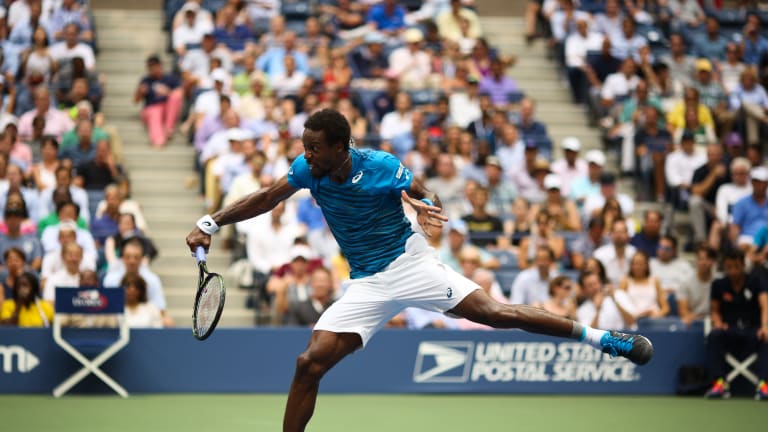NEW YORK—Asked to describe his 6-3, 6-2, 3-6, 6-2 semifinal win over Gael Monfils on Friday, Novak Djokovic said it could be summed up in one word: “Humid.” He may have been referring mainly to the weather—it was a sticky summer day—but it served as a pretty fair description of the weirdness that had transpired on court. The heat went to both guys’ heads, and bodies, and together they produced one of the true anti-epics of 2016.
Djokovic was edgy to start. He asked chair umpire Eva Asderaki twice to have the lights in Ashe Stadium turned off—“It’s the middle of the day”—and told her to “Pay attention a little” after a close call went against him. But Djokovic was a paragon of normalcy compared to Monfils.
The Frenchman had spent the previous five rounds, as well as the better part of eight months, making many of us believe that he was a reformed man; now that he was 30, it seemed, the show was out and the grind was in. On Friday, it only took Monfils a little more than an hour to remind us again that—first for worse, and then for better—Gael is still Gael, and will always be Gael.
At the start, Monfils’ timing was off on everything. Double faulting and shanking forehands, he went down 0-5 in 16 minutes. Then, with Djokovic serving at 5-1, something strange happened. It looked like Monfils, standing in the middle of the court and pushing the ball back listlessly, was trying to concede the set. Except that Djokovic wouldn’t give it to him. Thrown off by Monfils’ lack of effort, he double-faulted, lost his rhythm and was broken. After the next changeover, Monfils continued to push. Why change a winning game?

